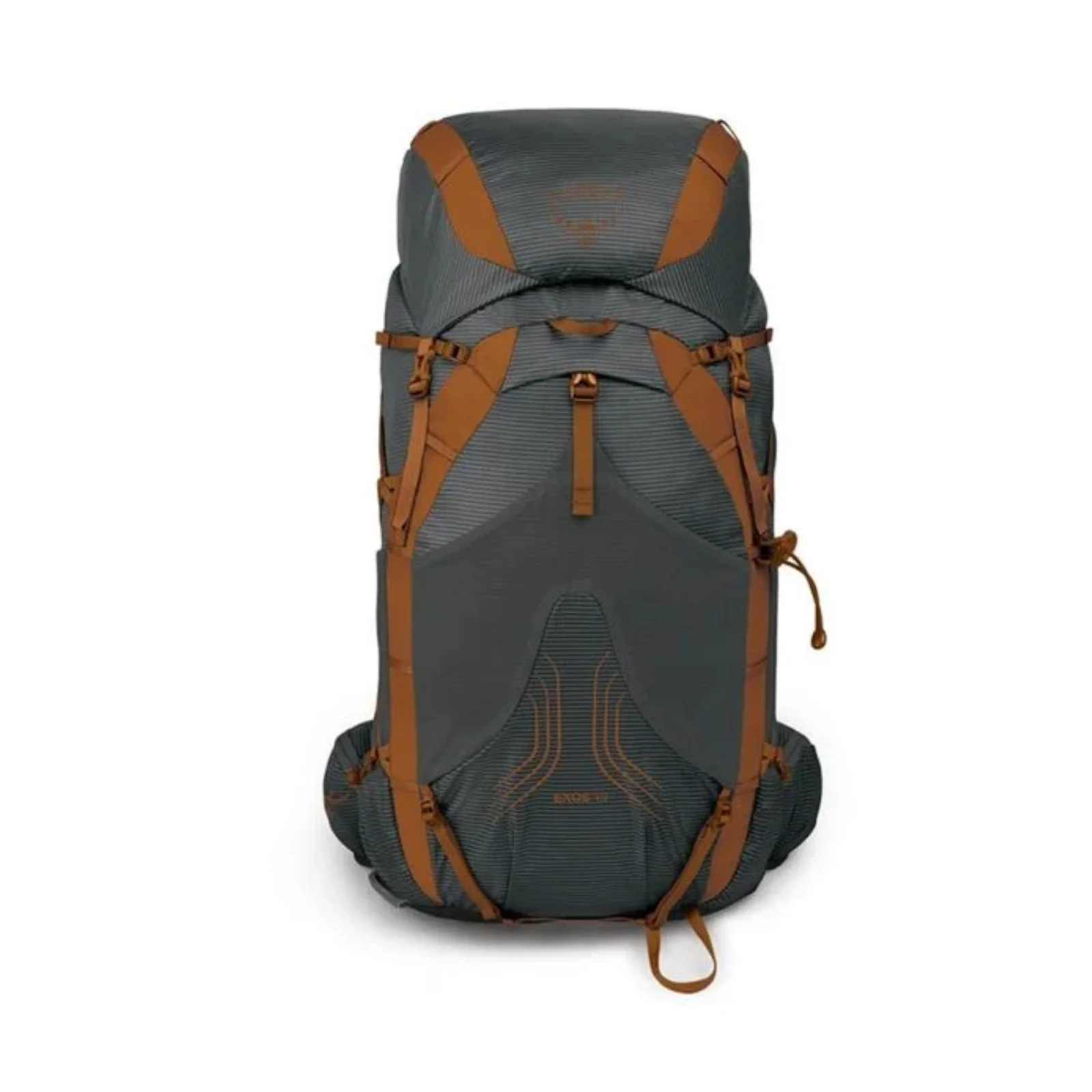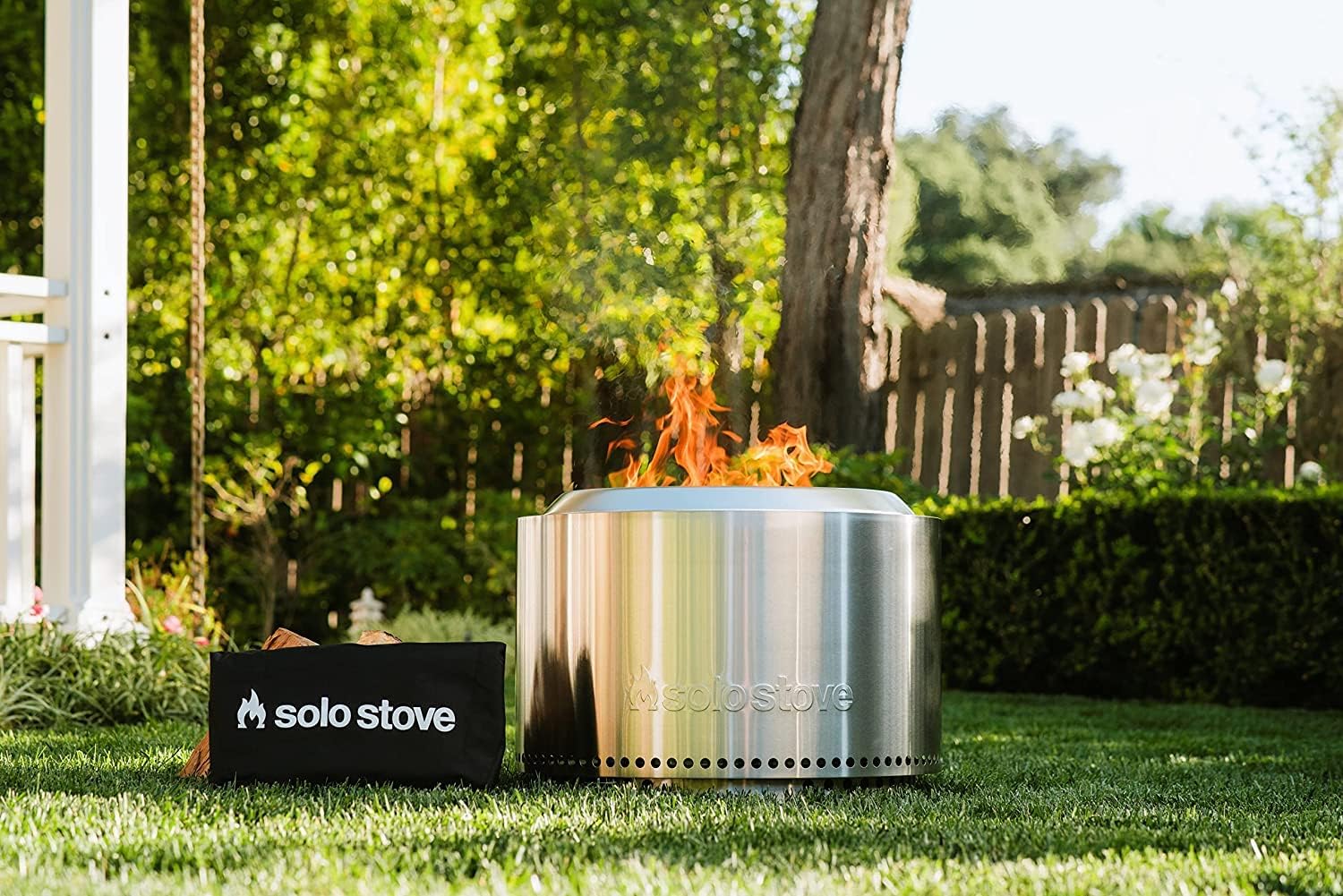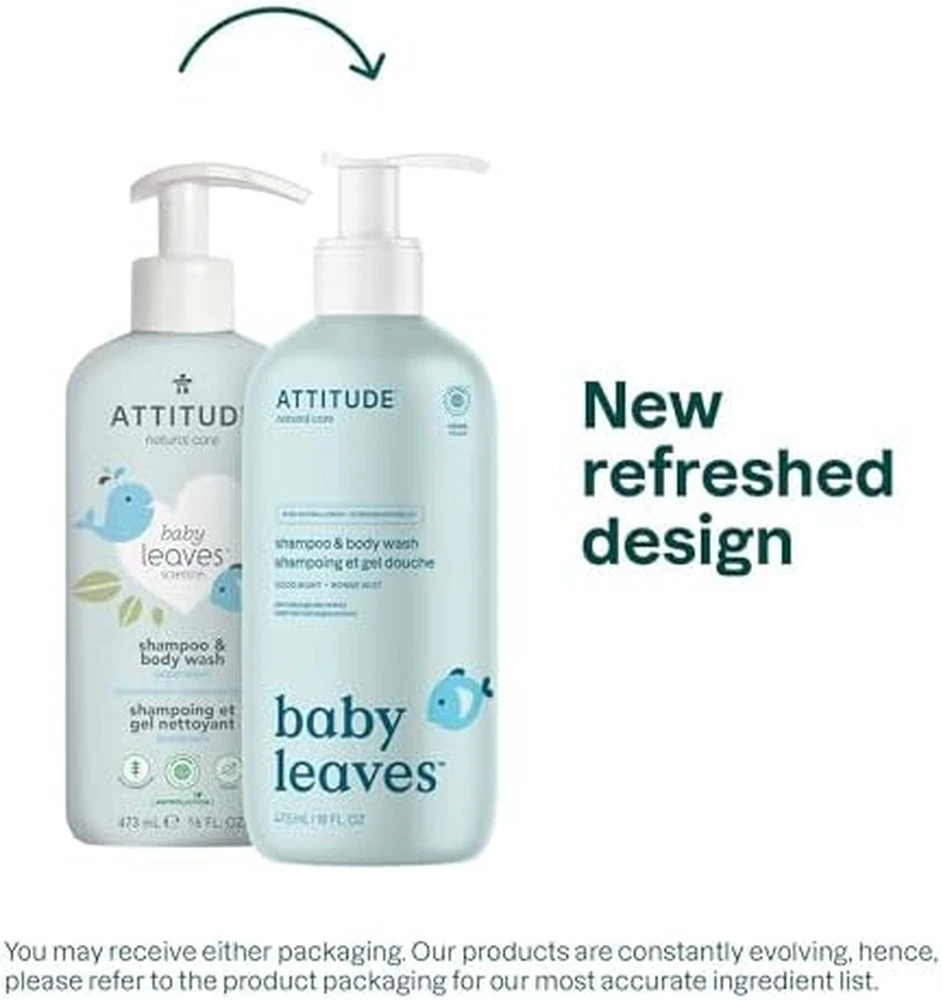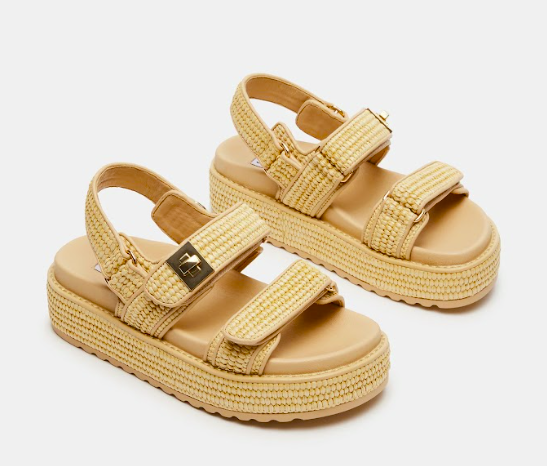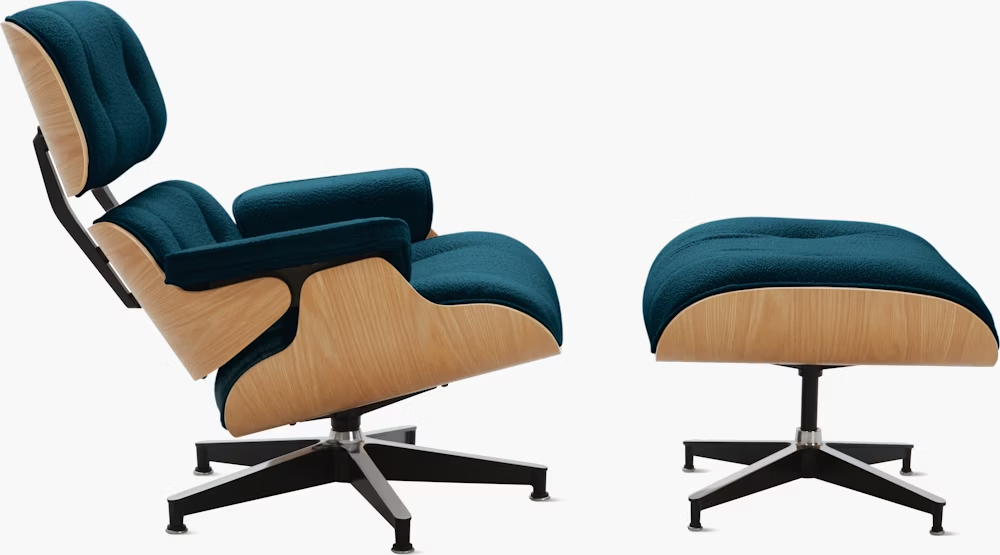Overpacking steals miles. Too many “just in case” items, a sagging load, and shoulder bite can turn a dream route into a plod. In this article, we’ll show you how to build an ultralight-leaning system that keeps comfort high and decisions low — using the Osprey Exos 48 as a benchmark for stability, ventilation, and real-world versatility on multi-day trails.
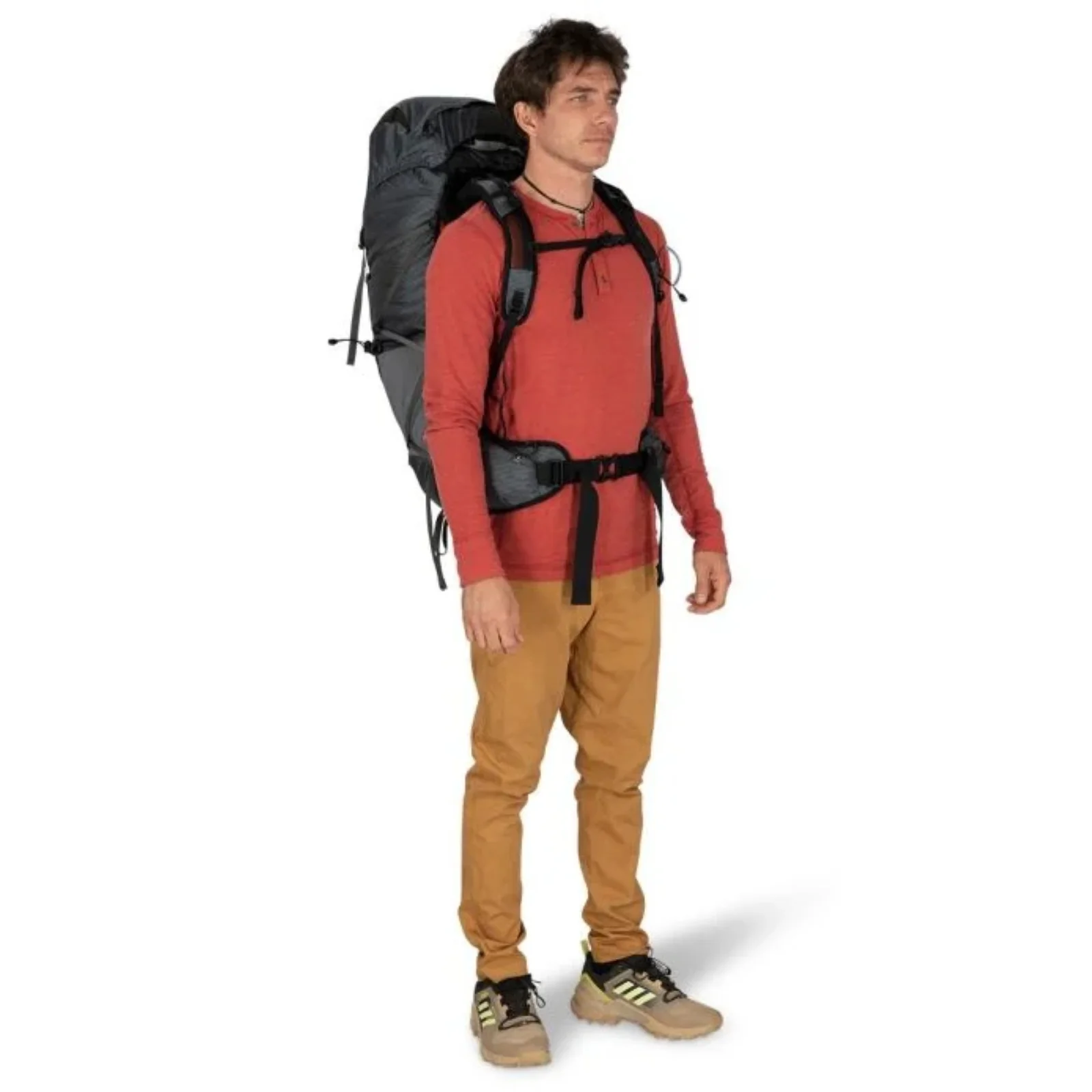
Why 48 Litres Hits the Sweet Spot
Go too small and you’re playing Tetris with essentials; go too big and you fill space you don’t need. The Osprey Exos 48 sits in the “Goldilocks” zone for weekenders, hut-to-hut trips, and even fast-and-light weeklong routes with strategic resupplies. It carries like a daypack when underloaded and still swallows a shoulder-season kit (sleep system + insulation + shelter) without asking you to wrestle the zip. The magic is that you get volume without the penalty of a heavy frame.
Ventilation and Frame: Save Energy, Not Just Grams
Weight is a headline figure, but comfort is the story. The trampolined, ventilated backpanel on the Osprey Exos 48 holds the load a touch off your spine so sweat can move and hot spots stay calmer. A minimalist frame and tensioned mesh distribute weight into the hipbelt instead of your trapezius, which means you arrive at camp with shoulders that still work. Translation: fewer micro-breaks, steadier pace, more scenery.
Pocket Map: A Place for Everything (So You Stop Digging)
Good organisation doesn’t add pockets — it adds predictability. Here’s a repeatable layout that turns the Osprey Exos 48 into a muscle-memory machine:
- Main tube (bottom to top):
- Base: sleep system stuffed loose (no sack) so it fills dead space and cushions the frame: quilt or bag, sleeping clothes.
- Middle: shelter in a dry bag, cooking kit, food for today plus first part of tomorrow.
- Top: insulation layer (puffy) and rain jacket for quick grabs, then the day’s lunch.
- Front stretch pocket: wet fly/groundsheet, sit pad, windshirt — the “wet/dirty” zone that keeps the main tube clean.
- Side stretch pockets: 1–2L bottles, tent poles on the spine side, or a filter bag.
- Hipbelt pockets: snacks, lip balm, tiny sunscreen, mini first-aid.
- Lid (if fitted): map, headtorch, loo kit in a zip pouch, spare gloves.
When every item has a lane, breaking camp is a five-minute ritual, not a 30-minute rummage.
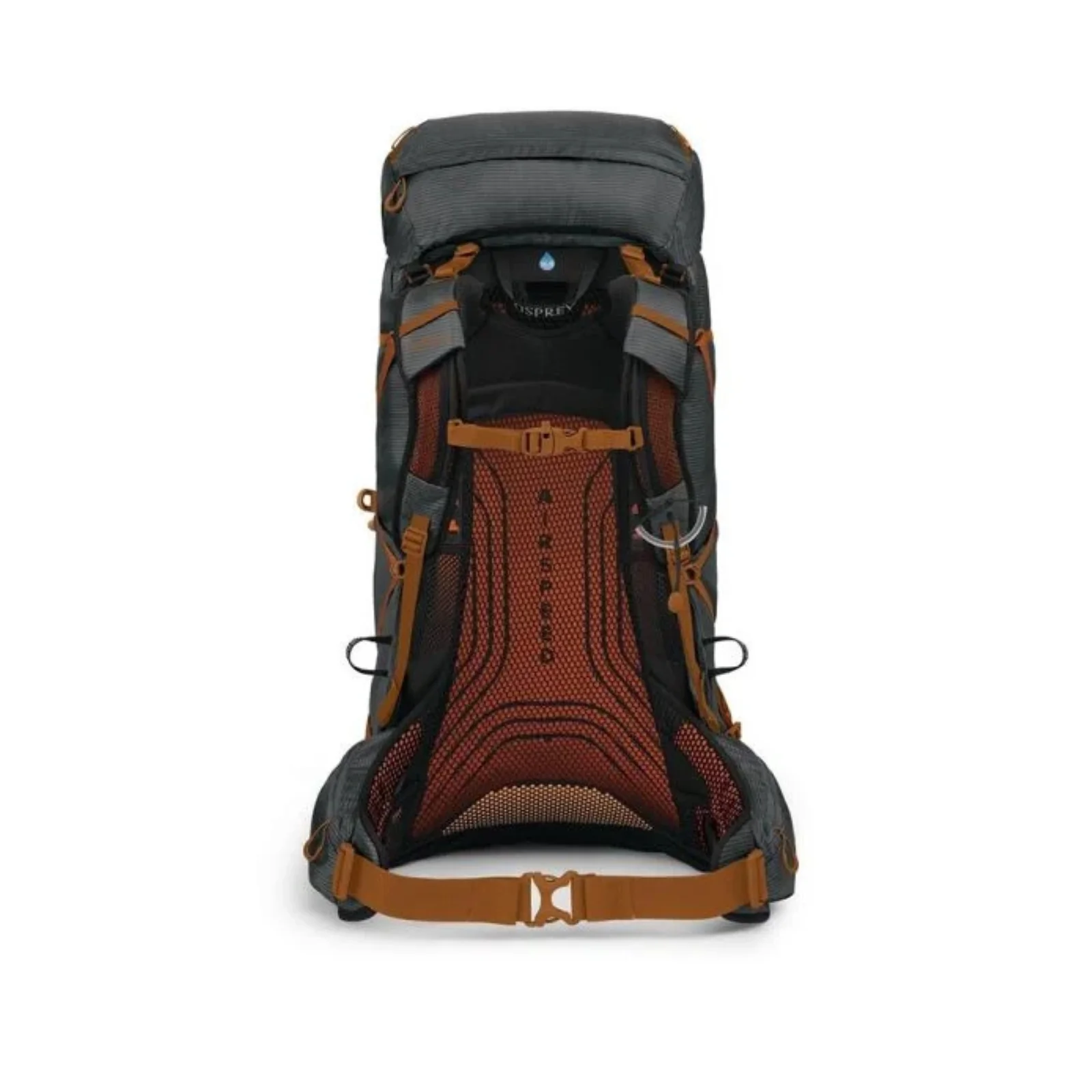
The Big Three: Where the Real Weight Hides
You’ll feel the largest gains by tuning the “Big Three” — pack, sleep system, and shelter. The Osprey Exos 48 already gives you a light, supportive carry; pair it with a sub-1 kg quilt/bag and a 1–1.2 kg shelter, and suddenly a seven-kilo base weight looks realistic. Don’t chase grams at the expense of warmth or weatherproofing — find the balance that keeps you smiling when the forecast hiccups.
Fit and Carry: Micro-Adjustments That Matter
Tiny tweaks equal big comfort. With the Osprey Exos 48, start by setting the hipbelt so its padding hugs the top of the iliac crest (hip bones), then snug shoulder straps until they kiss the body of the pack without dragging weight forward. Use load lifters (those little top straps) to fine-tune the angle on climbs vs. flats. If you feel shoulder bite, the fix is usually hipbelt and lifters — not tighter shoulder straps.
Fast Access = More Miles
The best miles are the ones you don’t stop for. Build a “no-pack-off” routine: water in the side pocket you can reach, 400–600 kcal of snacks split into hipbelt pockets, and a thin buff tucked behind a shoulder strap. Rain on the horizon? Keep the jacket at the top of the main tube or in the front stretch pocket. If you can solve heat, food, and moisture with tiny adjustments on the move, you’ll cover more ground without feeling rushed.
Food and Fuel: Smarter, Lighter, Warmer
Cold, tired you makes bad choices. Pre-portion dinners in zip bags and store them as “days,” not categories — today’s dinner + breakfast sit together on top of the food stack, so you don’t dig through a week’s worth at dusk. Choose fuel and menu to match terrain: if water is abundant, plan for boil-in-bag meals with a tiny stove; if water is rarer, bring calorie-dense cold-soak options. The Osprey Exos 48’s front pocket is perfect for a wet cookpot after camp — it dries while you move.
Water Strategy: Carry Less, Refill Smart
Litres are heavy. Study your route and carry to the next source plus a margin, not all-day volumes “just in case.” The Osprey Exos 48 plays nicely with both bottles and bladders; many hikers prefer two bottles for instant refills and easy treatment (drop, shake, done). Keep a soft 1L in the front pocket as an emergency buffer on dry sections.
Poles, Axes, and Odd Shapes: External Carry That Doesn’t Annoy You
Nothing ruins rhythm like clattery gear. Use the side compression straps on the Osprey Exos 48 to clamp tent poles against the pack body; thread ice tools or trekking poles through dedicated loops when hands-free. The goal is a quiet carry that doesn’t fishtail — your knees and patience will thank you by lunchtime.
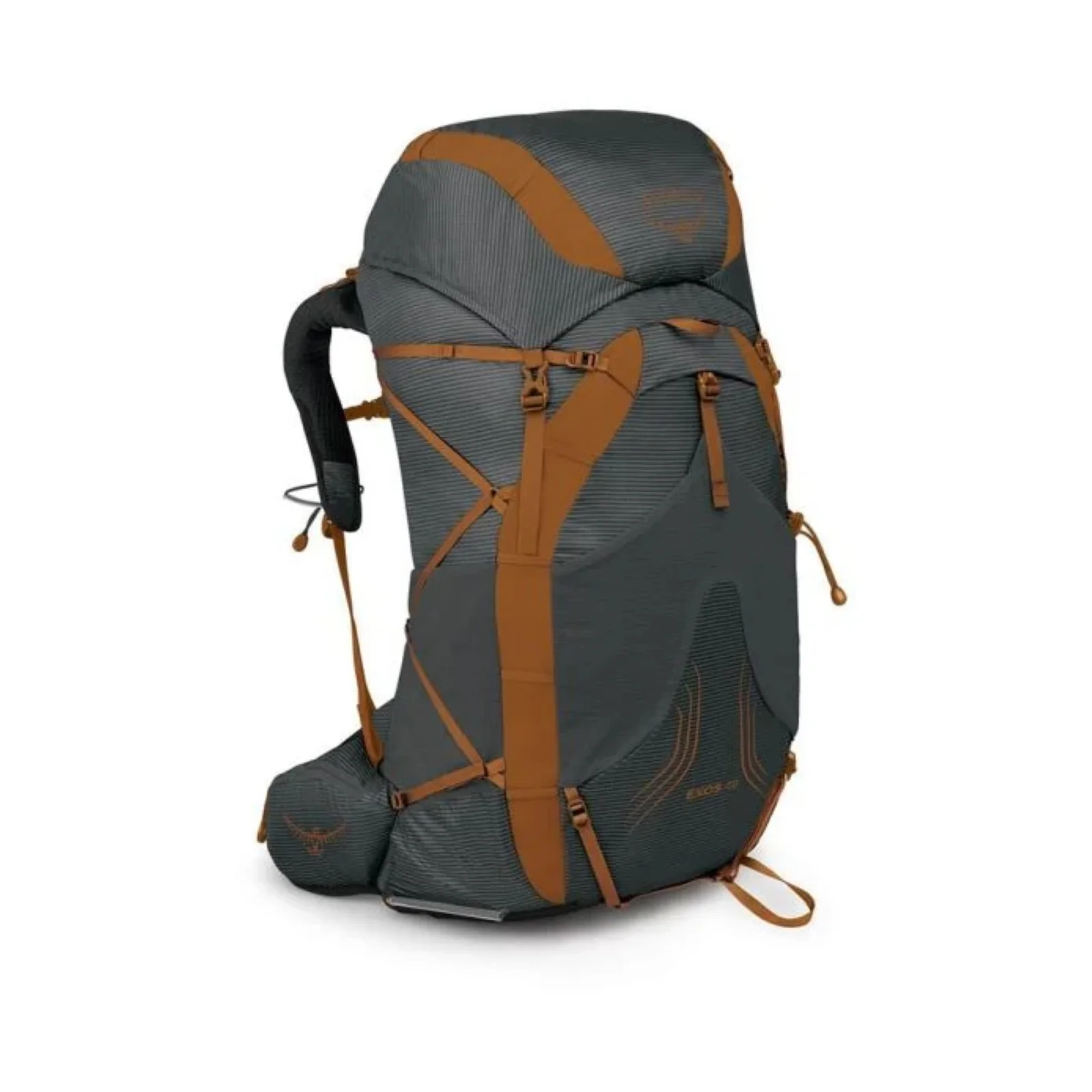
Shoulder-Season Setups: When Weather Keeps You Honest
Spring and autumn add complexity: colder nights, fickle rain, and shorter daylight. The Osprey Exos 48 gives you the volume headroom for a warmer bag and an extra mid-layer without turning your pack into a bulging barrel. Keep wet-risk items (puffy, sleep clothes) double-bagged in a roll-top dry bag mid-tube; stash gloves and hat at the very top so you don’t burn time when wind picks up on the ridge.
Camp Skills That Save Your Tomorrow
- Pitch first, unpack second: shelter up, then lay out sleep kit — weather changes faster than you think.
- The “last-out bag”: a tiny zip pouch with headtorch, lighter, loo kit — lives at the top so first light doesn’t start with a scavenger hunt.
- Leave no trace discipline: bin bag liner in the stretch pocket; pick up micro-trash on the way out — the easiest grams you’ll ever carry.
Care & Longevity: Keep the Pack Trail-Ready
Dust and salt shorten gear life. Give the Osprey Exos 48 a quick brush and wipe after trips, open all zips to air, and store it uncompressed so foams recover. Check strap stitching and tension points every few trips; a five-minute inspection at home avoids a trail-side bodge job later.
Sample 3-Day Loadout (So You Can Copy–Paste the System)
- Shelter: 1–1.2 kg tent (fly accessible in front pocket), poles side-strapped, pegs in a tiny pouch with the poles.
- Sleep: 10–5°C quilt/bag, inflatable mat, sleep socks and hat in a mesh bag at the base.
- Clothing carried: mid-layer fleece, ultralight puffy, rain jacket, spare socks/liner gloves.
- Cook: 750–900 ml pot, tiny stove + 100 g gas, lighter, long spoon; tea/coffee sachets.
- Water: two 1L bottles (treatment tablets or filter), optional 1L soft bottle buffer.
- Food: ~700–900 kcal per hiking block; pre-portioned day packs.
- Smalls: headtorch, repair tape, power bank + short cable, first-aid micro-kit.
All of it drops into the Osprey Exos 48 with room to spare for a shoulder-season layer, and the balance stays neutral and quiet on the move.
Small Habits, Big Miles
- 30-minute shakedown walk at home: if anything rubs, fix it before the trail.
- Snack on the 45s: 2–3 mouthfuls every 45 minutes prevents the “bonk” and keeps mood steady.
- Feet first: air socks at lunch, dab hot spots early, and keep a tiny foot kit in the hipbelt pocket.
- Evening reset: refill water, stage breakfast at the top of the food stack, and pre-pack layers — mornings become automatic.
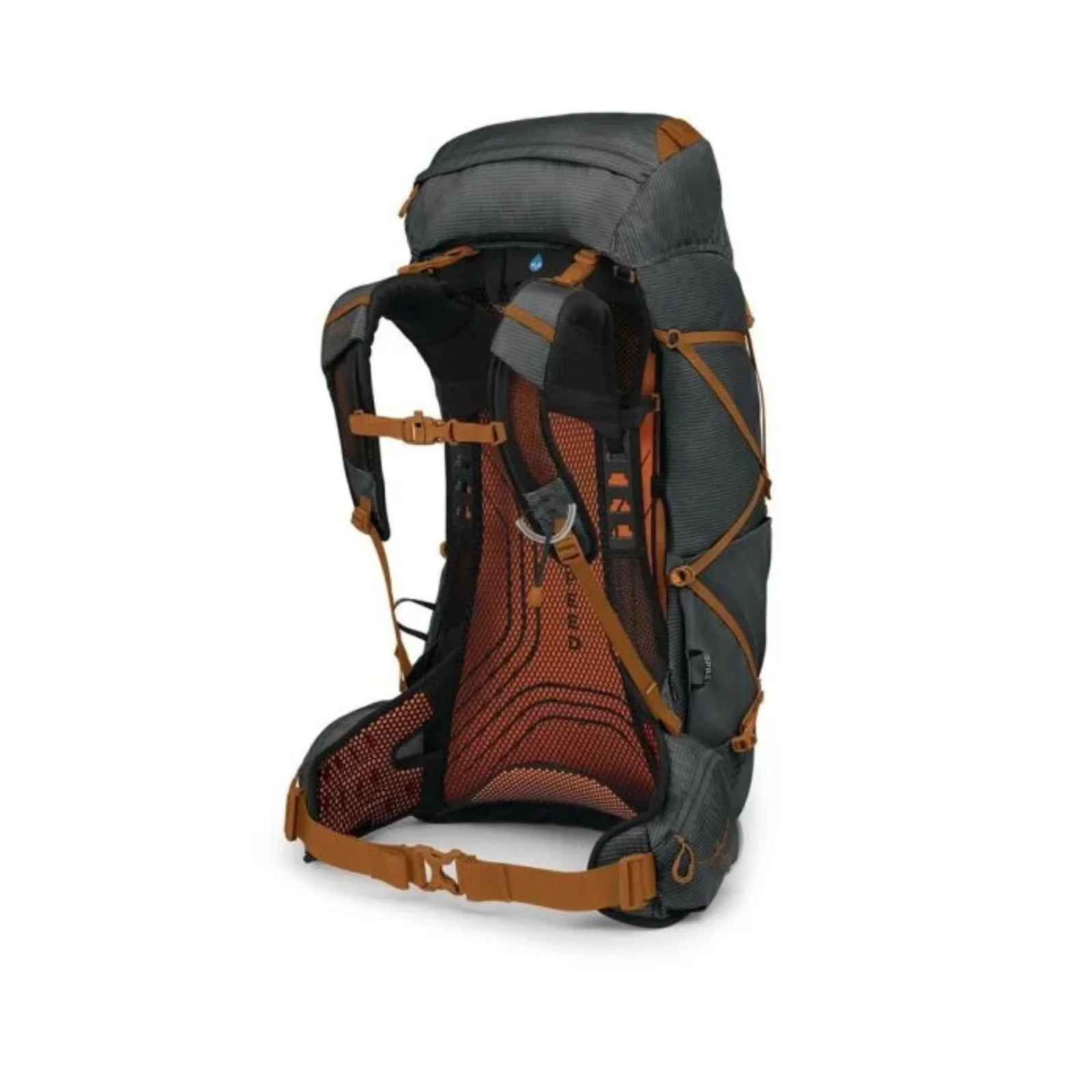
Conclusion
A great backpack should disappear when you’re moving and shine when you’re packing. The Osprey Exos 48 does both: airy ventilation that keeps energy up, a supportive yet minimal frame, and just-right volume for real multi-day mileage. Pair it with a simple pocket map, dial your Big Three, and shift to a “no-pack-off” rhythm on trail. You’ll hike farther, stop less, and arrive with enough left in the tank to enjoy camp — which is the point of the trip in the first place.
FAQ
- What trip length is 48L best for?
Weekend to weeklong routes with smart resupplies. The Osprey Exos 48 also flexes for shoulder-season kits when you need extra insulation. - Bladder or bottles?
Both work. Many hikers run two 1L bottles for simple treatment and quick refills; a soft 1L backup lives in the front pocket. - How do I stop shoulder pain?
Set the hipbelt first, then lightly tension shoulder straps and fine-tune with load lifters. Keep dense items mid-tube and close to your back. - Where should the tent go?
Poles on the side under compression straps, fly/groundsheet in the front stretch pocket, inner in the main tube inside a dry bag if rain is likely. - Can it handle shoulder-season loads?
Yes — the Osprey Exos 48 has the volume and structure for a warmer bag, extra mid-layer, and a sturdier shelter without turning unwieldy. - Any quick packing rules?
Sleep system loose at the base, weather layers at the top, food by days, and a “last-out” pouch for headtorch/loo kit where you can grab it in seconds. - How do I keep it feeling new?
Brush dust and mud after trips, air zips open, store uncompressed, and check strap stitching regularly. A one-song cleanup keeps it trail-ready.

